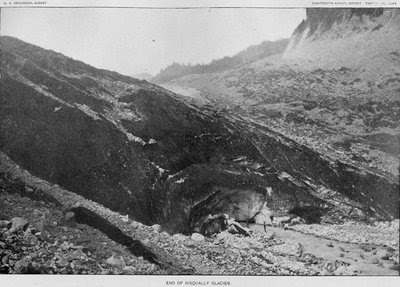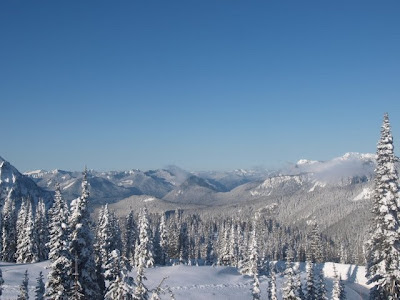
The road between Longmire and Paradise is closed today (3/29/12) for a winter storm warning and avalanche risk on the slopes along the road. Assessing the dangers and risk of avalanches is a specialized skill exercised by a wide range of dedicated people with the government agencies and organizations, coordinated and produced by the NWAC with their respective counterparts in the government agencies.
During the avalanche season you can get a daily report of Mt. Rainier NP with the report of the area west of the Cascade Mountains between Snoqualmie Pass and White Pass here which is translated into a map by the Huxley College at WWU, found here, you have to select the region and then zoom into Mt. Rainier NP.
The NPS staff, working with NWAC, determines the risk, and if necessay, as today, they close the road between Longmire and Paradise until the risk is reduced for travelers to Paradise. During the week, this isn't important due to the fewer vistiors but on weekends, it is important to ensure visitors have a safe visit and enjoy the beauty of the NP.
So, take your hats off to all these folks for the great work they do for all of us.













